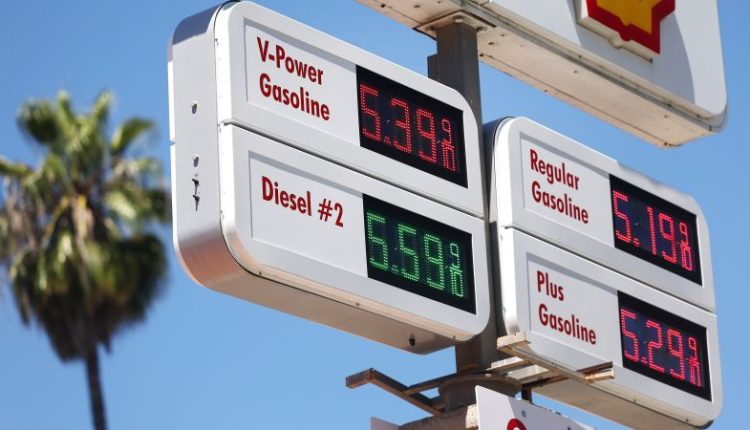Drivers hitting the roads this Labor Day weekend will be greeted by historically high gas prices for this time of the year.
The record-high for gas prices during the week leading up to Labor Day was set in 2012 at $3.84 a gallon, according to a CNN review of federal data that goes back to 1990.
Current prices are just shy of that. The national average for regular gas is $3.83 a gallon as of Thursday, according to AAA.
Normally, prices at the pump cool off as the summer winds down. Not this summer.
For a variety of reasons — including OPEC holding back supply and extreme heat that has messed with refineries — gas prices have steadily increased this summer. The national average price for regular gas stood at $3.58 a gallon on Memorial Day, the unofficial start to summer.
“This is abnormal. Prices normally fade towards the end of the summer,” said John LaForge, head of real asset strategy at the Wells Fargo Investment Institute.
Eleven states across the country average $4 a gallon or more, according to AAA. That includes Illinois, Washington, Arizona and California.
The good news is that gas prices are still well below the peak set in June 2022. At that time, fears about supply disruptions in Russia sent oil prices skyrocketing, lifting the national average price for regular gas to a record of $5.02 a gallon.
Gas prices fell sharply from those levels as Russia disruptions failed to emerge and the Biden administration aggressively drained emergency oil reserves.
As recently as July 4th, drivers were saving significantly year-over-year on gas.
However, the situation changed as oil prices jumped, boosted by easing recession fears and Russia and Saudi Arabia slashing production.
“Saudi Arabia has cut production to increase the price of crude oil and balance their budgets,” said Andy Lipow, president of consulting firm Lipow Oil Associates.
Gas prices have also been boosted by the record-high temperatures that have blanketed much of the country this summer.
Some of America’s aging refineries – the last major refinery was built in 1977 – can’t go all-out in triple-digit temperatures.
Analysts blame the heatwaves as well as heat-related power blackouts for causing outages at multiple refineries. Those have limited how much gasoline (and diesel and jet fuel) refineries can produce at a time of seasonally strong demand.
The latest data from the US Energy Information Administration shows that Gulf Coast refiners only operated at 92% of capacity last week.
“They’d like to run at 100%. They have the economic incentive to run at 100%. They just can’t because of the heat,” said Lipow.
It’s worth noting that while gas prices are high for this point of the calendar, these figures aren’t adjusted for inflation.
On a real (inflation-adjusted) basis, monthly gas prices were well above $4 a gallon late in the summers of 2011-2014, according to the EIA.
Still, consumers are very sensitive to increases in gas prices, in part because of how visible they are. Many people view the price of gas as a key economic barometer.
In fact, the Conference Board blamed the recent uptick in gas prices for driving down consumer confidence in August.
“The average consumer isn’t thinking about it in inflation-adjusted terms,” said Lipow. “Because the price is shown at every corner, people see the price and think about what it used to be.”
Read the full article here

